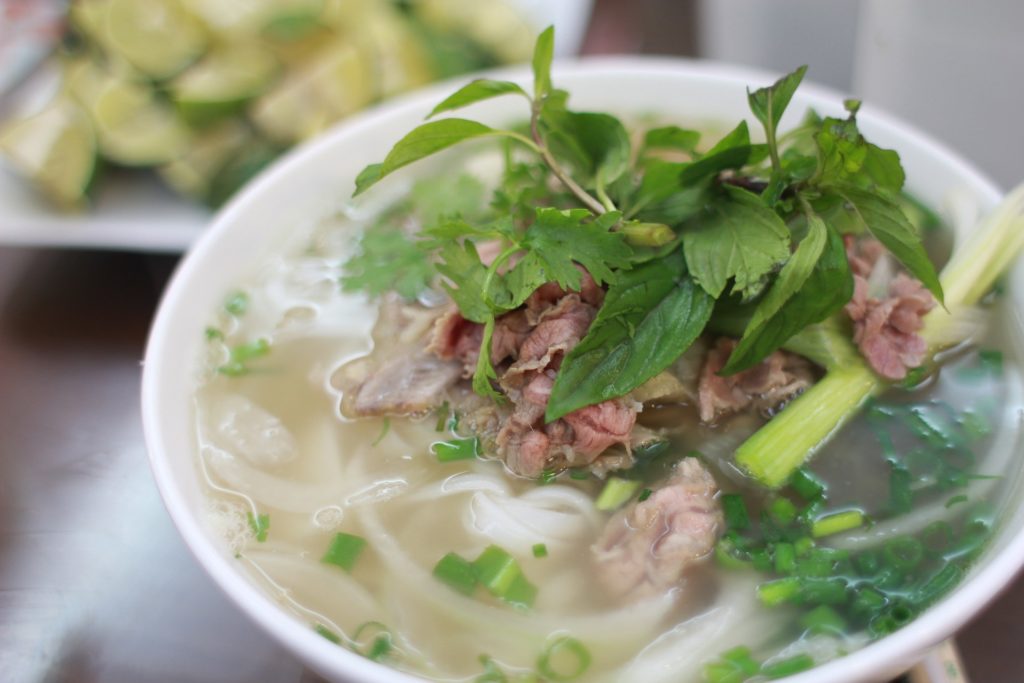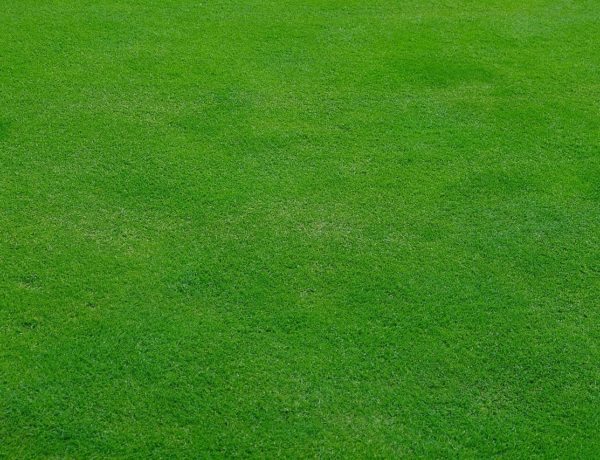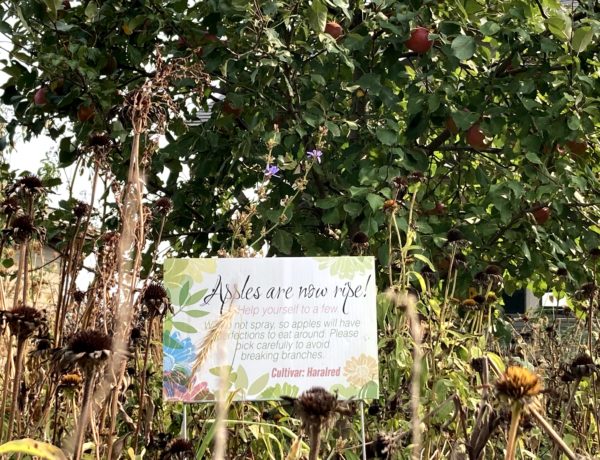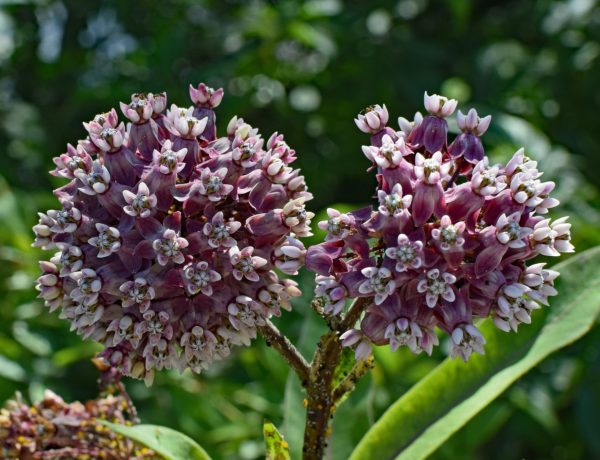Mint, in all of its spreading, growing, thriving glory, is an excellent plant to add to a low-maintenance edible landscape. Tons of resources on growing mint are already widely available, so I’m not going to do that here. No, my job here is to rescue mint (and many plants like it) from its stigmatic prison.
Minty stigma
Advice for planting mint almost always comes with the admonition to plant it only in containers (which can be high-maintenance and difficult) or within some sort of barrier system. When it’s not that, the advice is usually to avoid planting it at all. People are often afraid to plant mint because of this. Will it crawl into the — gasp — lawn? Will it take over my petunias? Will it silently creep toward my neighbors and swallow their house?
The reason this plant and others that grow aggressively get such a bad rap is because of advice from gardeners who want to maintain complete control over every single inch of their garden. In this 6 square inches I want daisies, in this square foot I want a marigold plant, and in this five square inches, I want mint, but it cannot move outside of its spot!
Let go
Controlling mint is way too much work, and that’s why intensive gardeners are so wary of adding it to their garden. But what I’m suggesting you do might be even harder than trying to control mint, and that’s this: LET GO. Stop trying to control things so much. Nature has her own plans, and when humans try to stop her, they will be fighting their entire lives.
Let your garden be a little wild. Americans spend $887 billion going camping and hiking and visiting national parks to view the beauty of nature, and then they go home and mow and spray and weed and fertilize and do everything they can to stop that nature from existing in their lawns and in their gardens. They perch framed paintings of yellow birch stands in the fall on their walls and then go outside and dutifully spray the clones emerging all around their front yard poplar trees. They buy plastic vines to trellis onto their kitchen cupboards and then curse the birds while they pull the Virginia creepers they’ve planted at the base of fences and trees. It sounds silly when you read it doesn’t it? But it’s what feels natural in our culture. Why? This article by Scientific American offers some insight.

Make it easier
Controlling plants is simply not the efficient gardener’s way. Easy-to-grow and useful-to-human plants are the holy grail of gardening without tons of money and effort. Put these plants in the ground and they take up just as much space as they need to take up. Particularly if you’re looking to convert much of your lawn to low-maintenance edible landscaping, you will be seeking out useful plants that spread aggressively with which to fill space. That’s the whole point. It’s these plants precisely that allow us to grow food and medicine without much work. If you want to do intensive gardening and grow many of your calories in a small space, then yes, mint will get in the way. But if you are looking to make your yard more eco-friendly and productive than lawn grass with even less maintenance than a lawn, plants like mint are your go-to.
About mint
There are tons of plants that you can grow that are either edible or medicinal that require absolutely no effort, and I will continue to write about them. Mint in particular is so well-known precisely because it is so useful. Mint is edible and delicious. You can’t make a mint julep or mojito without mint, and it’s a mainstay in Middle-eastern and Asian dishes.

Mint is fresh and bright and helps calm headaches and suppress nausea. It acts as a pest deterrent in the garden and around the home. Because of this, mint is a highly useful plant to add to a fruit tree guild. Also, bees and butterflies love flowers of the mint family. Mint is a beautiful plant that does not need to be mowed, but also won’t beckon neighbors to report you — its aggressive nature means it overpowers plants that your neighbors might consider weeds.
Mint is a family of plants (Lamiaceae), but here I am referring to plants in the Mentha genus. Popular cultivated species include M. x piperita (peppermint), M. spicata (spearmint), and M. suaveolens (apple mint). There are hundreds of varieties of garden mints. In the U.S. wild mint, M. arvensis, is a native plant. Whichever plant you choose to grow, my advice is simply to appreciate its ability to thrive. Oh, and maybe stop calling it invasive. It’s not.
Plant profile
| Family | Lamiaceae |
| Genus | Mentha |
| Species | many |
| Common Name | Mint |
| Habit | Gound Cover |
| Height | 1-3 feet |
| Foliage Color | Various greens |
| Flower Color | Purple |
| Bloom Time | Mid to Late Summer |
| Duration | Perennial |
| USDA Zone Hardy Perennial | 3-11 |
| Reproduction | Cuttings, division |
| Native US | Mentha arvensis is native. Cultivated varieties are not |
| Aggressive Behavior (High, Med, Low) | High |
| Sun | Full sun to part shade |
| Moisture Req | Average to moist |
| Drought Tolerant | Yes |
| pH | 6.0-7.5 |
| pH Description | Acid to Neutral |
| N Fixation | No |
| Root Structure | Rhizome |
| High Biomass Production | Yes |
| Soil Penetration | No |
| Edible Leaf/Stalk | Yes |
| Edible Fruit | No |
| Edible Seed | No |
| Edible Root | No |
| Edible Flowers | Yes |
| Harvest Time | Growing season |
| Storage Time | 1 year dried |
| Storage Notes | Dry for winter use |
| Poisonous Parts | No |
| Medicinal | Yes |
| Medicinal uses | Adaptogen, Analgesic, Anodyne, Anticancer, Antifungal, Antioxidant, Antispasmodic, Aromatic, Astringent, Carminative, Cholagogue, Cordial, Diaphoretic/sudorific, Emmenagogue, Expectorant, Febrifuge, Hepatic, Insect repellant, Nervine, Refrigerant, Skin tonic, Stimulant, Vasoconstrictor |
| Insectary | Yes |
| Pest Confusion | Yes |
| Fragrance Pleasant to Humans | Yes |
| Deer Resistant | Yes |
| Beauty (urban, H, M, L) | High |
| Fuel | No |
| Fiber | No |
| Dye | Yes |
| Thorns | No |
| Tolerates juglone | Yes |
| Allelopathic | No |
| Purchase Locations | Cuttings, divisions from locals. Do not buy seeds for peppermint, it is a hybrid that cannot be grown from seed. Seeds for native plant prairiemoon.com. |
What are your perceptions of mint? Is it evil or miracle?



